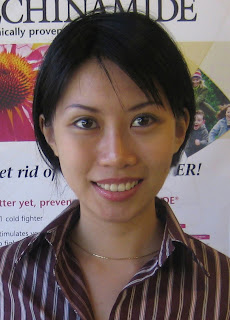Haris' Farewell Party was held at Centro@Sooka , KL Sentral.
Great company
They sure know how to look demure when the paparazzis are around.
Nice ambience

Good food
Haris: Aish... who's gonna take care of these kids when I leave?....
At least 10 people asked for Su's number in the past 8 hours.
I'll have to see her on Monday to propose a new SMS service.
Type:
MM (space) Hotline (space) Su
Send to DAPAT | 32728
Charges: RM30 per message
"Hey, where's the champagne?"
"It's under the table"



Haris *fighting back tears*: I'll miss these budak-budak...
All the best in your future undertakings, Haris!











































